QuestionMaybe you can shed some light on a discussion my wife and I have been having. We have a 6 year old paint mare who previously had a very severe case of white line, which started from some quarter cracks allowing the organisms into the foot, and required a series of IV treatments (expensive!) to clear it up. That was 12 months ago - she showes some slight recurrence this summer, but now seems to be pretty clear. Conditions get pretty muddy here in the winter, and when the mud gets deep it tends to pull shoes. I am planning to keep this mare in a dry, bedded stall in the barn when it's muddy this winter, and my wife doesn't necessarily agree. She thinks that if the cracks are gone, the mare should be fine. So my question is, do the muddy conditions increase the chance of recontracting white line for my mare who is in remission from the condition, even though she no longer has quarter cracks? Thanks, R. Archer
AnswerMud and shoes are a horrendous combination! *grin* Regardless of shod or barefoot, however, the hooves MUST be trimmed up correctly in order to help keep the them in good form AND function. A hoof that is in good form will not have the separations or other infarcts that allow environmental nasties to enter the foot. The hoof *should* be an completely enclosed unit ... with no entryway anywhere for bacteria or fungii to invade. if the hoof is not trimmed and balanced correctly i.e. the walls are left too long, the effects jeopardize the integrity of the entire hoof capsule. That's when problems arise. One of the issues with shoes are the nail holes that allow fungus and bacteria to enter into the foot. I am a natural hoofcare advocate who parlays for barefooted horses. So, because of this I naturally recommend that the shoes be removed for the hooves' integrity to be restored. I also am an advocate for the most natural lifestyle for the horse as possible and this includes turnout as much as is feasible; preferably 24/7. Keeping horses in stalls can be stressful on them as they are hardwired to need to keep moving. Every system in their bodies is dependent upon adequate movement, including their mental well-being. So I cannot agree with keeping a horse stalled in deep bedding for lengthy periods of time. Then the horse is standing in manure and urine much of the time both of which are detrimental to overall hoof health. Uric acid eats protein ... that means it eats hooves which are keratinized proteins.
If the cracks are gone and the hooves are in good condition, form and functioning well, there *shouldn't* be an issue with white line disease or other invasive conditions. But, once again, shod or not, the trim is the baseline for the overall health and it must be correct for the individual horse and hoof.
The best scenario for the horse as you described would be to ensure that the hooves are well balanced, leveled, and if shod, that the shoes are of proper fit. That minimizes the chances for white line disease or other pathologies to take hold. If the hooves are in good form then mud should be of little concern.
Hope some of this is helpful to you.
--Gwen

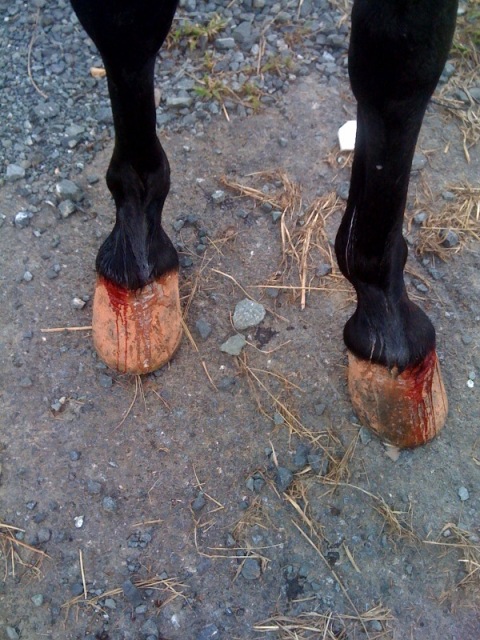 bleeding hooves
Question
bleeding hooves
hi Joepaul! I have attached a
bleeding hooves
Question
bleeding hooves
hi Joepaul! I have attached a
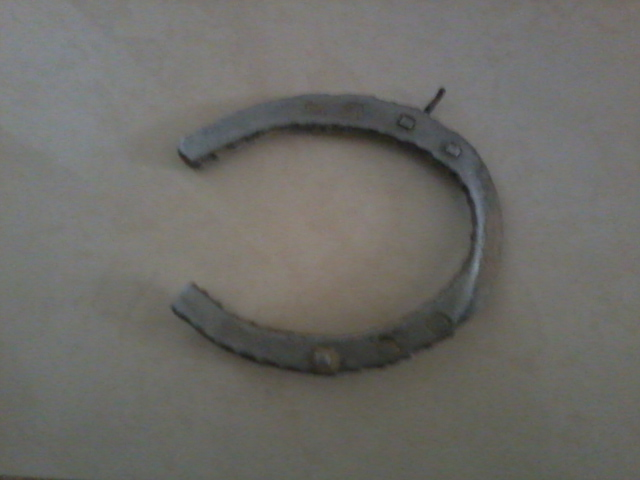 toe bent shoe
Question
toe bent toe bent.
hello sir. thi
toe bent shoe
Question
toe bent toe bent.
hello sir. thi
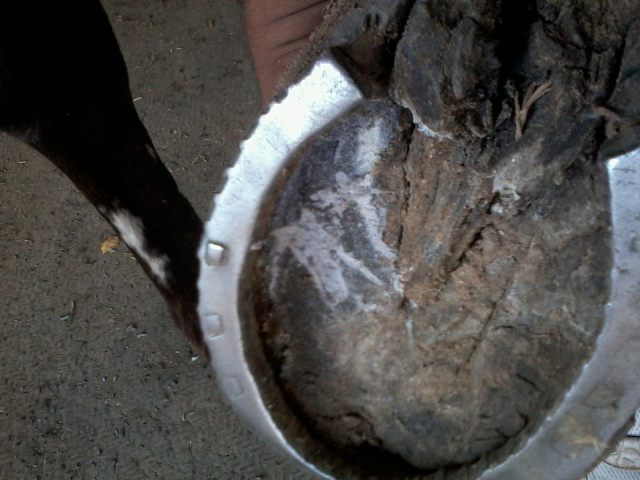 horrible hooves
Question
left fore right fore
hello sir.
horrible hooves
Question
left fore right fore
hello sir.
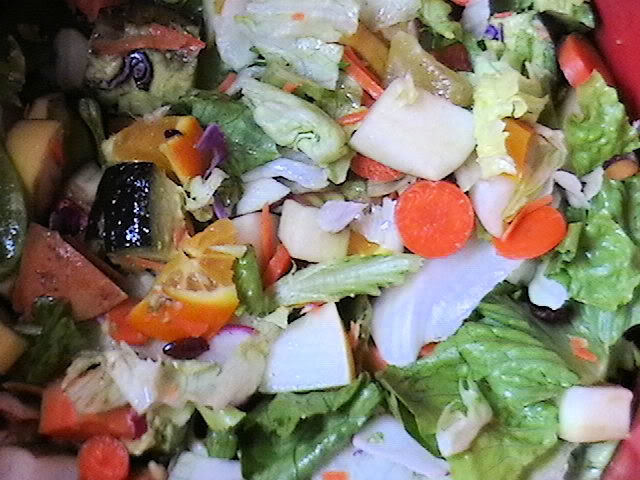 Donkey protein diet
QuestionHello, I read the article on the WLD and your r
Donkey protein diet
QuestionHello, I read the article on the WLD and your r
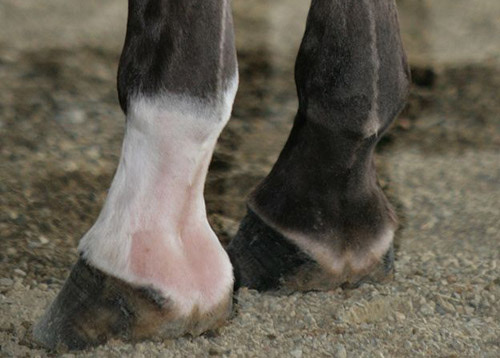 white legged horses - cracked heels
Question
white legged
hello, may i know why whit
white legged horses - cracked heels
Question
white legged
hello, may i know why whit